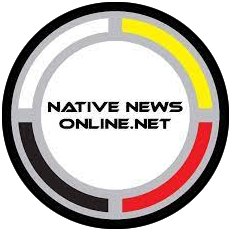
- Details
- By Native News Online Staff
The Living Languages Grants are awarded by the Indian Affairs Office of Indian Economic Development and range in value from $200,000 to $300,000 per year for three years.
The program targets Tribes whose languages are at risk of disappearing due to declining native-speaker population. The degradation of Native language is a result of more than a century of oppression and forced assimilation driven by federal Indian Boarding Schools that forbade Native children from speaking the language of their peoples.
 Make A Donation Here
Make A Donation Here
“Living Languages Grant Program funding supports Tribal communities in restoring and revitalizing their traditional languages, thereby preserving the essence of their cultural identities and sovereignty,” said Assistant Secretary for Indian Affairs Bryan Newland in a statement. “Investing in Native language revitalization is just one part of our all-of-government approach to addressing the harms caused by federal policies of the past, such as Federal Indian Boarding School which actively worked to suppress Native languages and cultures.”
The Living Languages Grant Program’s focus for fiscal year 2024 is on Native language immersion projects that support a cohesive Tribal community-approach through collaborative instruction based on current language immersion models. This year’s funding is intended for projects that provide an “all-of-community” language program with measurable outcomes that will be achieved within three years.
The award recipients and amounts are:
- Cherokee Nation, Tahlequah, Oklahoma: $300,000
- Kickapoo Tribe of Oklahoma, McLoud, Oklahoma: $300,000
- Red Cliff Band of Lake Superior Chippewa Indians, Bayfield, Wisconsin: $300,000
- Reno-Sparks Indian Colony, Reno, Nevada: $300,000
- Sac & Fox Nation, Stroud, Oklahoma: $300,000
- Igiugig Village, Igiugig, Alaska: $299,999
- Sitting Bull College, Fort Yates, North Dakota: $299,928
- Confederated Tribes of Coos, Lower Umpqua and Siuslaw Indians, Coos Co., Oregon: $299,900
- Metlakatla Indian Community, Metlakatla, Alaska: $299,900
- Modoc Nation, Miami, Oklahoma: $299,807
- Wichita and Affiliated Tribes, Anadarko, Oklahoma: $299,279
- Kalispel Indian Community, Cusick, Washington: $298,552
- Lower Brule Sioux Tribe, Lower Brule, South Dakota: $296,273
- Lummi Tribe, Bellingham, Washington: $296,000
- Bundled Arrows Inc., Niagara Falls, New York: $288,098
- Shawnee Tribe, Miami, Oklahoma: $280,200
- Tribal Government of St. Paul Island, St. Paul Island, Alaska: $277,500
- Central Council of the Tlingit & Haida Indian Tribes, Juneau, Alaska: $265,920
- San Carlos Apache Tribal Council, San Carlos, Arizona: $219,647
- Quechan Tribe, Yuma, Arizona: $201,997
More Stories Like This
Native News Weekly (August 25, 2024): D.C. BriefsUS Presidents in Their Own Words Concerning American Indians
Native News Weekly (December 14, 2025): D.C. Briefs
Wounded Knee Massacre Site Protection Bill Passes Congress
Two Murdered on Colville Indian Reservation
Help us defend tribal sovereignty.
At Native News Online, our mission is rooted in telling the stories that strengthen sovereignty and uplift Indigenous voices — not just at year’s end, but every single day.
Because of your generosity last year, we were able to keep our reporters on the ground in tribal communities, at national gatherings and in the halls of Congress — covering the issues that matter most to Indian Country: sovereignty, culture, education, health and economic opportunity.
That support sustained us through a tough year in 2025. Now, as we look to the year ahead, we need your help right now to ensure warrior journalism remains strong — reporting that defends tribal sovereignty, amplifies Native truth, and holds power accountable.
 The stakes couldn't be higher. Your support keeps Native voices heard, Native stories told and Native sovereignty defended.
The stakes couldn't be higher. Your support keeps Native voices heard, Native stories told and Native sovereignty defended.
Stand with Warrior Journalism today.
Levi Rickert (Potawatomi), Editor & Publisher

